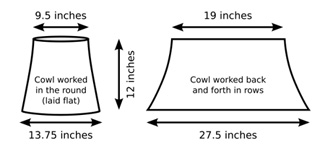|
|
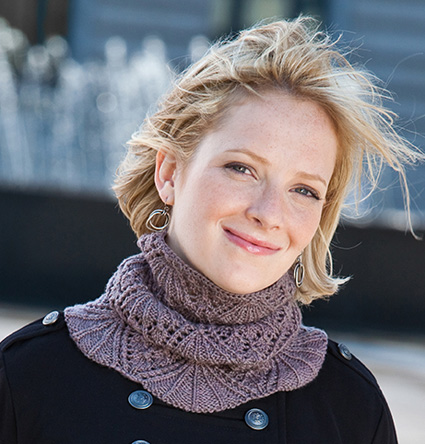 |
A little something pretty to slip on as the weather cools. The Eleanor cowl is a fun, fast knit when you just have to indulge in knitting some lace, but don’t want it to take forever. A sweet lace design adds an appealing accent to cool weather wardrobes. A funnel shape allows the cowl to follow the contours of the body; the wider bottom allows it to spread out over the base of the neck, while the narrower top keeps it snug around the neck. The lace pattern forms a soft scalloped edge at the base for a feminine flare. Instructions are provided for both working flat and in the round. |
Pick your favorite sport weight yarn
for this. Lorna’s
Laces Shepherd Sport comes in many beautiful
colors, so you can make a cowl to match
any outfit or mood. Or for added warmth,
you might prefer the cashmere content in Debbie Bliss’s
Baby Cashmerino. |
|
|
|
|
|
SIZE |
 
|
|
FINISHED MEASUREMENTS |
|
MATERIALS Notions GAUGE |
|
PATTERN NOTES |
|
Instructions for the Long-Tail Cast
On can be found here. Information about blocking lace can be found here and here. sk2p: Sl 1 knitwise, k2tog, pass slipped st over. 2 sts decreased.
|
The charts for this pattern are very large and fit on a letter-sized page. Click here and print the resulting page. |
|
DIRECTIONS 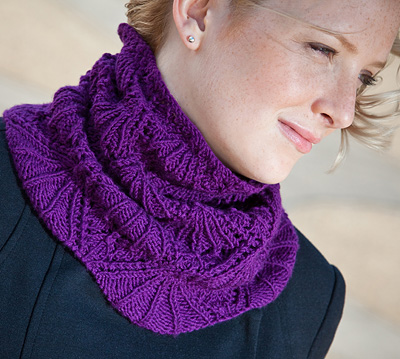
Using largest straight needles and long tail method, loosely CO 132 sts. Switching to mid-sized needles, work Rows 1-14 of Chart A, working outlined pattern repeat section five times. If desired, place stitch markers between pattern repeats. 112 sts when all rows of Chart A are complete. Work Rows 1-50 of Chart B, working outlined pattern repeat
section four times. Switching to smallest needles, work Rows 23-49 of Chart
B once more. If working in the round: Switching to mid-sized circular needle, work Round 1 of Chart A, working outlined pattern repeat section only; place markers between pattern repeats if desired. Pattern repeat will be worked 5 times in each round. Very Important: For both charts, work only the outlined pattern repeat section.
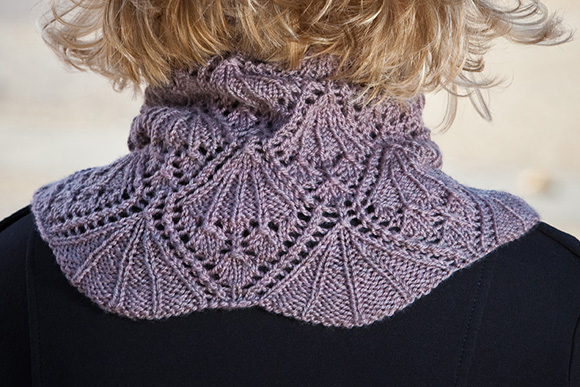
Work Rounds 1-50 of Chart B. When you begin working Rounds
5, 15, 35 and 48 (highlighted in chart), move marker at
beginning of round as follows: remove marker, sl first
st to right needle, replace marker. This point will now
be beginning of round. Switching to smallest needles, work Rounds 23-49 of Chart
B once more. |
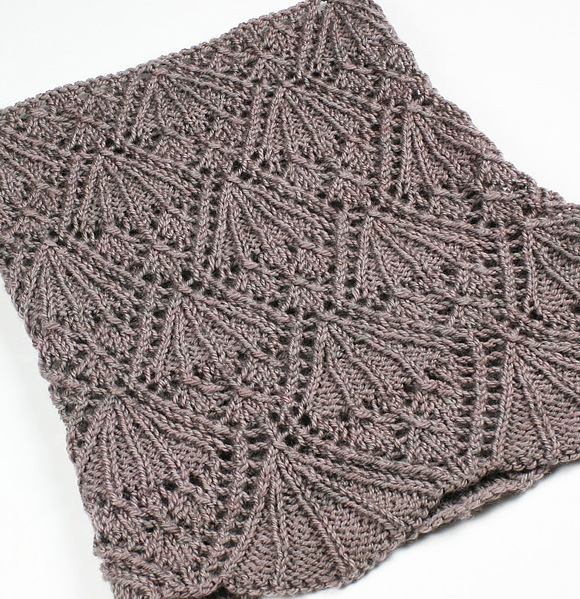
|
|
FINISHING
|
| ABOUT THE DESIGNER |
|
|
|
Pattern & images © 2010 Audrey Knight. Contact Audrey |


